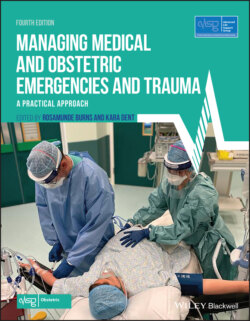Читать книгу Managing Medical and Obstetric Emergencies and Trauma - Группа авторов - Страница 134
7.3 Pathophysiology of sepsis
ОглавлениеOnce an infective agent enters the body it binds to the surface of immune cells such as macrophages and monocytes and initiates the immune and coagulation cascades. This involves the release of both pro‐ and anti‐inflammatory cytokines along with pro‐coagulant mediators which activate the extrinsic coagulation pathway and inhibit fibrinolysis. Infection becomes sepsis when the balance of pro‐ and anti‐inflammatory mechanisms tips towards pro‐inflammation.
The pro‐inflammatory cytokines cause endothelial dysfunction and leaky capillaries resulting in vasodilatation and maldistribution of fluid. Activation of the extrinsic coagulation cascade and inhibition of fibrinolysis results in the formation of thrombi in the microcirculation. These thrombi then compromise organ perfusion, resulting in impaired delivery of oxygen to tissues and organs. If unchecked, this can lead to multiorgan failure and ultimately death.
